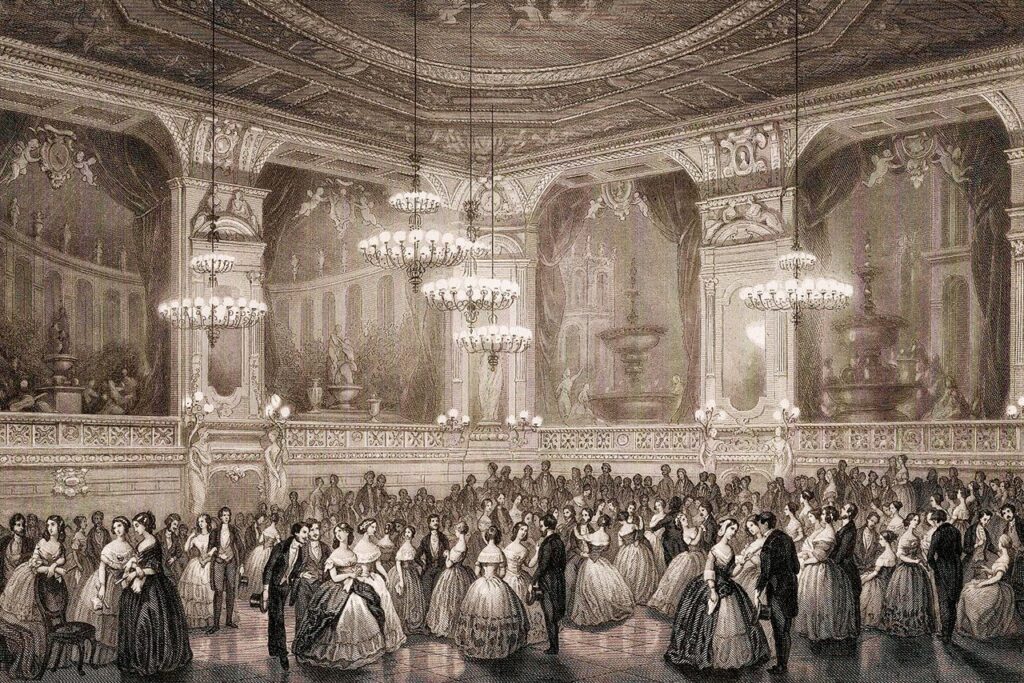

Kurhaus and Casino
It is thanks to M. Bénazet and his father that Baden-Baden was able to become the centre of social life in Europe. In 1689, the Sun King’s soldiers set fire to the town! Baden-Baden shared the fate of Heidelberg Castle. However, the proud people of Baden-Baden soon set about rebuilding their town. The spa business was resumed. From the middle of the 18th century, bathing and gambling were once again permitted in the inns! This was not a matter of course at the time, but was only guaranteed by the “baths privilege”.
How did the double name Baden-Baden actually come about?
As the town of Baden was located in the Grand Duchy of Baden, it was called “Baden in Baden” or simply: “Baden-Baden”. After all, they didn’t want to be confused with Baden near Vienna or Baden in Switzerland.
The Kurhaus we are standing in front of here is also unmistakable!
It is located outside the historic city walls. This means that it was only built sometime after Baden-Baden was rebuilt, in 1824, when it was already becoming too cramped for the people of Baden-Baden and their guests within the old city walls. A representative of German classicism, Friedrich Weinbrenner, built the Kurhaus. He was a contemporary of Schinkel and Klenze.
At the time, it was also known as the Maison de Conversation. The up-and-coming bourgeoisie met in Ba-den-Baden. They wanted to be in no way inferior to the aristocracy in the art of conviviality!
And this joie de vivre appealed to Bénazet senior. He left Paris when the Palais Royal’s gambling licence was revoked in 1838, discovered Baden-Baden and took over the licence and the house from Antoine Chabert.
His family invested significant sums in the city. For example, he supported the extension of the railway from Oos to Baden-Baden. They had plans for the Baden spa town that were worthy of a capital city!
They wanted to make Baden-Baden the social centre of the new era and it was important from the outset that the spas, hotels – such as the European Court opposite – the salons and the theatre complemented each other. Bénazet therefore invested all of the casino’s profits in the expansion and beautification of the city. After all, the city was in competition with the other fashionable spas of the time: Vichy, Wiesbaden, Montecatini, Spa, Franzensbad, Karlsbad and Bath. The aim was to win this competition and be la cité la plus en mode.
Bénazet hired the most famous Parisian set designers and artists of his time to decorate the interior of the casino! Pierre-Luc-Charles Ciceri and Charles Séchan designed the Winter Garden, the Red Hall, the Florentine Hall, the Salon Pompadour… the inauguration of the new public rooms was in 1855! The whole of Baden-Baden was turned upside down… It was a dream of form and beauty. The film diva Marlene Dietrich was later quoted as saying that our casino was the most beautiful casino in the world






